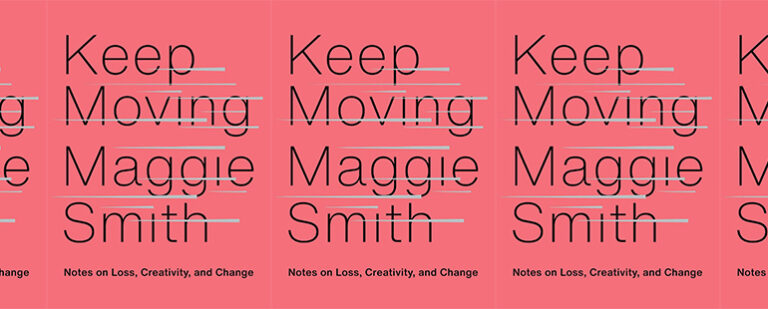Reconstructions: An Interview with Soraya Peerbaye

I first met Toronto poet Soraya Peerbaye at the beginning of 2003, when she participated in a series of workshops I was conducting at Collected Works Bookstore in Ottawa. Since then, her poems have appeared in Red Silk: An Anthology of South Asian Women Poets (Mansfield Press, 2004), as well as a variety of literary magazines and chapbook anthologies such as Translating Horses, ottawater and cycle 7 (above/ground press, 2003). Her first collection of poetry, Poems for the Advisory Committee on Antarctic Names (Goose Lane Editions, 2009), was nominated for the Gerald Lampert Award.
Her second collection, Tell: poems for a girlhood (Pedlar Press, 2015) writes out the details of Reena Virk, a girl of South Asian descent murdered on November 14th, 1997, in Saanich, British Columbia. Peerbaye’s collection, which recently won the Trillium Book Award and was shortlisted for the Griffin Prize for Poetry, works through the details and evidence of the trials in heart-wrenching lyric. From the Griffin Prize “Judges’ Citation”: “Tell: poems for a girlhood traces the events surrounding the 1997 murder of teenager Reena Virk by a group of high school classmates. Peerbaye bears brave witness to the unspeakable brutality of these events, drawing from testimonies of the convicted, the victim’s autopsy report, and a history of the landscape itself.”
Q: How did you first begin attempting to shape the story of Reena Virk into poetry?
A: Tell is a response to the trials of Reena Virk, through the language of the young witnesses, the Crown prosecutors and defence, and the specialists who presented evidence from different realms: forensic pathology, chemistry, ecology, weather and tides…The work also draws in the colonial history of the site of the murder.
Eight young people, mostly white girls, participated in the ruthless assault, which was initiated when one of them put out her cigarette on Reena’s forehead, where a bindi might have been. Six were convicted of assault causing bodily harm; two others, Warren Glowatski and Kelly Ellard, were accused of drowning Reena’s unconscious body and were tried for second-degree murder. Glowatski was convicted in 1999. Ellard was tried three times: the first verdict was overturned on appeal; the second trial ended in a mistrial, and the third ended in a conviction which was appealed, but upheld by the Supreme Court of Canada. In all, the trials took more than a decade to conclude.
I’d followed the story in the news when it broke, and my interest deepened when the first verdict was overturned. I attended Ellard’s second trial in 2004 and was struck by the nature of the testimony. By that point most of the witnesses had given multiple statements, to police, the courts, etc., and there was a tangle of incomplete, contradictory, and sometimes recanted narratives. Ellard’s counsel would cross-examine witnesses to the point of exhaustion on the slightest inconsistency.
It took me a long time to understand what I could work with. The witnesses seemed unable to describe why they did what they did, or even to describe Reena in any way – how she resisted, how she tried to survive. Their voices were listless. I realized that the trial is a telling that is not for the witness – not for atonement; it isn’t even for the victim. There were certain elements of testimony that the trial couldn’t hold, because they had no value for a narrative of guilt or innocence. And yet those were the elements that seemed to hold the only potential for an embodied kind of remembering. What shapes the poems in Tell are the pressures of telling a story under those conditions.
Q: I’m curious: how did you end up in that courtroom in the first place? What was prompting you to take notes?
A: I was invited to be playwright-in-residence for a theatre for young audiences the year that Kelly Ellard’s second trial began; the case lent itself as a potential subject. I wrote down everything I could because I didn’t want to rely on the media’s reconstruction of the events alone, which filtered out race and gender; I wanted the dynamic of the trial, a sense of what had happened to these young people, who they were as they were growing older, as they looked back on that night.
Q: Given you’d originally conceived of composing a play, what was it about the material that pushed you towards poetry?
A: I was more caught by the material’s state of fragility – the possibility that the narrative would fail, that it would founder; that the physical evidence was so slight – pebbles, salt stains. That testimony was being lost – a witness affected by PTSD, another dying of heart failure. The possibility of mistrial was always present; the possibility of acquittal. I felt that the narrative was disintegrating even as I wrote. Poetry seemed to be the only way of holding the material, the fraught nature of it, as something nonetheless transmissive, alive.
Given the exclusion of racism as motive, poetry also gave me the ability of tracing race and racism beyond the legal framework. It was deeply moving to walk through the landscape of Victoria; to be lost, searching for the Craigflower Bridge, and to find myself by Tillicum, one of the oldest archaeological sites on the west coast; to come across the Indigenous (coastal Salish) etymology of the name Saanich – “to emerge, as from water” – or the Songhee creation myth of the Gorge Waterway; to read the signposts beside the heritage building where Reena was assaulted, the bridge that she crossed – built so that white settler children could go to school. The significance of these places in colonial history. All of those things pulled me into a different sense of time, of affect. There was something larger that could be said, in allowing the testimony to be related to history, ecology, archaeology, myth, the autopsy.
Q: How does one go about attempting to organize such a mound of material? Obviously, poetry is rich in the tradition of the “documentary poem” (as Dorothy Livesay called it); were there any particular poets or works running through your head as you were working to structure your research into poems, and a poetry manuscript?
A: I struggled with it. I had to work against my own desire to know what happened; to make the narrative whole. In the end what holds it is simply a practice of staying, or trying to stay. I tried to allow being troubled; to soften the places where the testimony touches shock, revulsion – I don’t mean to make it easier, but to become more intimate with it.
The work is a vigil – for Reena, yes, but also for the trials, the testimonies, the witnesses themselves. From the moment her assailants lured her under the bridge, there are a multitude of lives and processes that are connected to her life and death, the integrity of her memory. Part of the difficulty was holding these things so that their significance could be seen in isolation, but also in a tensile relationship to each other. So that they could turn and return around each other. The greater difficulty was finding a way to indicate time, the endless trials, the repetition of questions, erosion. The decay of each process, each in its own time. I couldn’t tell it all at once, chronologically.
I was grasping throughout the years of working on it, but there were some things of which I was sure. I knew it wasn’t about the verdict, about Kelly Ellard’s guilt or innocence, but a wider field of questions: what do we have the capacity to believe, about children, girls, rage. I knew that the drowning should not to be the climax of the book. These were political decisions: there has been – of course – an extreme focus on Ellard, and the question of whether she drowned Reena alone or with the help of Glowatski – but I think it’s important to remember that this was very nearly a lynching. For that reason, also, I had an instinct to work backwards through the sequence of events, towards the bare-handed brutality of the first, collective assault. I wanted to return to Reena as a living young woman, to insist on her agency, her attempt to survive.
As for poets/collections that I looked to – the works I cite are always ones I feel I can’t compare to, but that teach me what I am unskilled at. Zong! by Marlene NourbeSe Philip, The Invisibility Exhibit by Sachiko Murakami, and children of air india by Renée Sarojini Saklikar, are three works I looked to for the way they examined trauma and dimensions of race and gender, and for the way they worked with legal documentation. Bloodroot: Tracing the Untelling of Motherloss by Betsy Warland and Fluttertongue 4: adagio for the pressured surround by Steven Ross Smith are more personal works, but that still – especially with Fluttertongue – holds the self in relation to the political world.
Q: Given the fragility of the multiple trials – that, as you say, could have ended in mistrial – it sounds as though the book was a way to salvage or secure some of the details of what had occurred. Now that the book is nearly a year old, are you able to interact with the book (and its surrounding details) with a bit of distance? How well do you feel you accomplished what you’d originally set out to do?
A: I love the way you phrase this proposal, these questions…Salvage, secure – yes, that’s true, though it’s also an interest in what remains unsalvaged, unsalvageable…to see the system that won’t salvage it.
I haven’t been able to read the book in its entirety since it was published. It was an active process for so long; I was re-reading the transcripts up until the last edit. Even considering materials beyond the trials – the Craigflower Bridge was torn down in 2013, and Indigenous human remains were uncovered in the excavation – it was hard to know when to stop; it was a strategy that feels so porous, receptive, responsive.
It’s strange to be with the book now that it’s done. At the same time I feel at peace with it. I don’t think I could have worked meaningfully with Kelly Ellard’s most recent statements to the parole board this past spring – yet another narrative, that I don’t think can be believed. At a certain point it’s a turbulence that exhausts itself. I never quite knew how to work with her absolute denial.
I don’t think of the book as good, or bad – at the end of the day, all it can hold is what I what I was able to do. I sometimes wish that I could give the material that obsesses me to other writers, and for it to become theirs. It’s a fantasy – that other writers had written it so that I could see what (else) it could be.
Q: I’m fascinated by poets deliberately working to examine, as you say, “trauma and dimensions of race and gender.” There are a number of Canadian writers utilizing the poem for more social/political engagement and conversations, from some of the poets you listed earlier—including Sachiko Murakami, Renée Sarojini Saklikar and M. NourbeSe Philip—as well as Liz Howard, Shane Rhodes, Fred Wah, Christine Leclerc and Stephen Collis (among so many others). What, in your mind, does the form of poetry allow that other forms, whether literary, non-fiction or even journalistic, might not? Quite simply: why poetry?
A: Hasn’t this always happened – hasn’t it happened as long as we’ve named the trauma of being in the political body? The field of Canadian writers of colour and Indigenous writers, including women, who speak to these questions is vast, and has been self-seeding for decades.
As to why poetry, for this: because it’s human experience. I don’t know that it enables anything that other forms cannot. I needed forms beyond poetry, particularly critical essays, to name racism and misogyny: in my own life, in what I could see of Reena Virk’s life and death; in the question of whose bodies, whose loss we have the capacity mourn. But I also needed to hold the unnameability of it: the fact that these young people couldn’t name the source of their violence, that our process for justice couldn’t name their contempt. That Canadian society is perpetually forgetting its colonial past.
I often find myself dumbfounded in the face of certain experiences, casual exchanges, readings of the daily news; it takes me a moment to recover language, a critical ability to see what is happening. A moment – sometimes years, decades. Poetry for me is a way of inhabiting that dumbness, the literal bewildering of it. It’s almost like a weather system – you can’t hold it, but you can feel it, its tension and motion and charge of it. I think poetry in some ways is a mapping of the language you know being unravelled.


